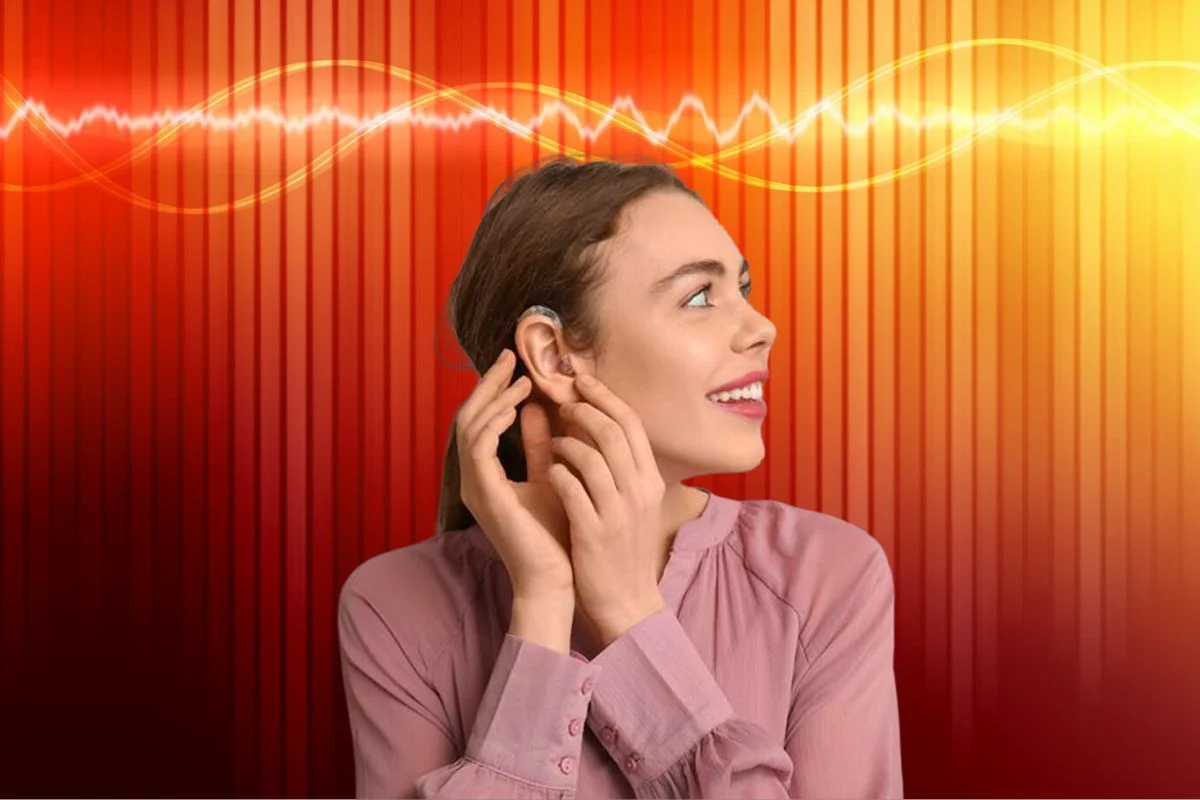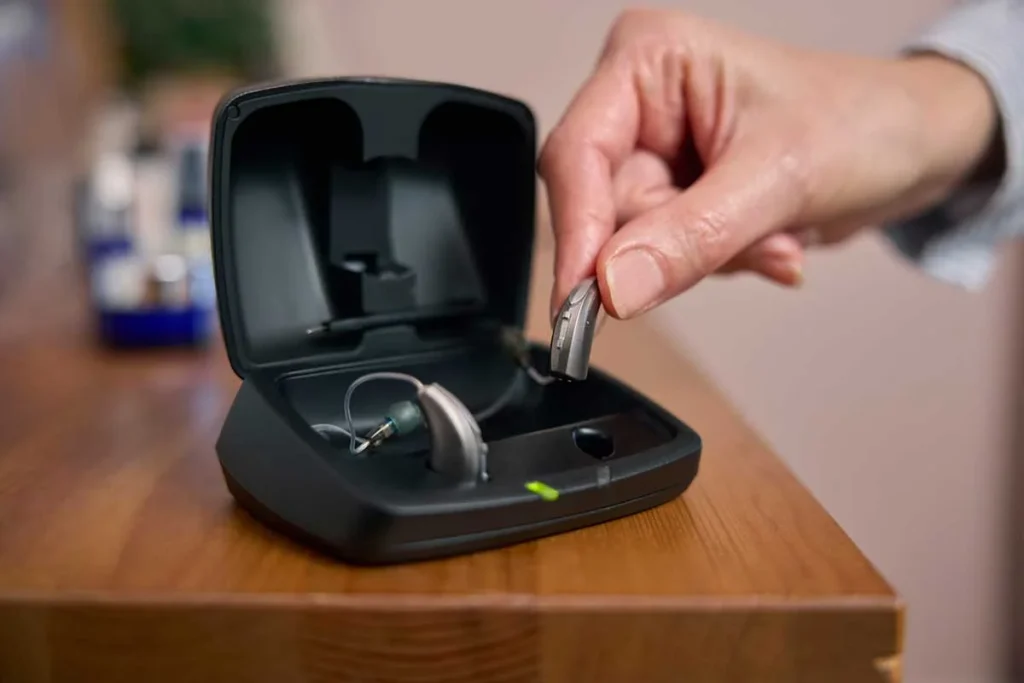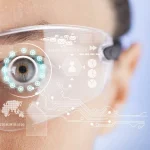Hearing 2.0: How OTC Hearing Aids are Reshaping Hearing Loss

Almost 15% of American adults report trouble hearing, and nearly 55% of people over the age of 75 have “disabling hearing loss” 1. Hearing loss comes with unfortunate consequences like cognitive decline, social isolation, safety issues, delayed language development, and mental health risks that can be alleviated by hearing aids.
A 2022 ruling by the FDA in 2022 to approve over-the-counter (OTC) hearing aids as an alternative to traditional hearing aids — which require a doctor’s prescription, professional fitting, and costly out-of-pocket expenses — has helped to improve accessibility for this quality-of-life-enhancing device2 .
The Global OTC Hearing Aid Market Size
The global OTC hearing aid market is valued at $389.5 million and is anticipated to grow significantly through 2028, with a compounded annual growth rate (CAGR) of 6.1%3.
The recent FDA regulatory change, technological advancements, e-commerce expansion, and affordability, are all contributing factors to rapidly propelling the global OTC hearing aid market.
OTC Hearing Aids vs. Traditional Hearing Aids
Hearing loss isn’t a cut-and-dry senior citizen issue. Risk factors include excessive noise exposure, age, some health conditions, genetics, head injuries, infections, and some medications. OTC hearing aids are a valid option for adults with mild to moderate hearing loss and offer enhanced integrated technology, easier accessibility, and reduced costs.
The Price of OTC Hearing Aids?
Cost is a significant barrier to traditional hearing aids, with the average hearing aid costing between $1,000 and $5,0004 and typically not covered by health insurance. Conventional hearing aids are expensive because they often require a fitting at the doctor’s office, repair and maintenance, and advanced technology for severe or extreme hearing loss.
OTC Hearing Aids, on the other hand, can be significantly less expensive, with many costing under $1,000 and being FSA/HSA eligible. E-commerce stores make shopping and comparing devices easier, while big box stores such as Best Buy make it more convenient for individuals to pick up a pair of hearing aids without the need to schedule a doctor’s appointment.
Customization of OTC Hearing Aids
Traditional hearing aids are prescribed and fitted by a doctor and audiologist, typically requiring the prescriber to program and fine-tune the individual settings.
OTC hearing aids have a more out-of-the-box fit with options to change the earpiece size for comfortability. It has basic features like volume control, noise canceling, and pre-set programming. However, more OTC hearing aid manufacturers are leveraging advancements in AI to offer more personalized audio to the individual.
Adaptive audio, for instance, could pick up on the user’s environment and automatically adjust the sound. Scenarios such as automatically reducing the background noise of restaurants and amplifying the sound of conversations at the users’ table are some of the ways OTC hearing aids are becoming more on par with traditional hearing aids.
Linner’s lineup of OTC hearing aids, for instance, enables users to adjust their sound settings via an app on their phones, giving them more control over their hearing aid preferences5.
Audio Quality
Severe hearing loss means difficulty hearing everyday sounds, even with an amplifying device. For patients who struggle to hear at 71 to 90 decibels, even with a hearing aid, audio quality is crucial to improving quality of life.
Apple made their jump into the OTC hearing aid market with the Airpod Pros 2, which uses computational audio to boost sound frequencies and deliver users clearer audio that isolates unwanted background noise6.

Innovation in OTC Hearing Aids
With enhanced IoT connectivity, OTC hearing aids integrate with multiple emerging technologies for a more connected experience. For example, ReSound Nexia was the first hearing device connected to Auracast broadcast audio, creating the ability to share sound between different Bluetooth speakers7.
Not only is this next-generation sound quality, but it increases connectivity and engagement between hearing aid users.
Advancements Enabled by AI Chips
Traditional hearing aids use advanced technology constantly being researched and developed to help patients with severe hearing loss. While the research and development of this technology plays a large role in its costs, advancements in AI and semiconductors are starting to close the gap with OTC hearing aids.
OTC hearing aids can pack powerful audio processing capabilities with outstanding battery life in compact and discreet designs. AI models such as noise reduction, sound enhancement, and environmental analysis are no longer limited to just traditional hearing aids.
Noise Reduction and Sound Enhancement
Two key components of a successful hearing device include noise reduction and sound enhancement. In traditional hearing aids these are highly sophisticated and customizable technologies fitted to a patient’s individual hearing assessment. OTC hearing aids have begun implementing this technology, with automatic adjustments picked up by the OTC hearing aids power microphones.
Real-Time Environmental Analysis
These cutting-edge microphones continuously monitor sounds in the environment, differentiating between background noise, voices, traffic, music, and more. OTC hearing aids leverage built-in algorithms for real-time environmental analysis, amplifying or reducing different sound categories.
The Future of OTC Hearing Aids
With both hearing loss and prevention on the rise, there is an ever-growing need for more affordable, efficient, and accessible hearing options. As OTC hearing aid technology advances rapidly, semiconductors will play a vital role in enabling these necessary medical devices. Semiconductors can power high-quality audio performance, improve connectivity, and provide energy-efficient power consumption to process complex AI audio computations.
While OTC hearing aids can be praised for their advanced technology for moderate to mild hearing loss, it is still important to consult with an audiologist to discuss your degree of hearing loss and see if OTC hearing aids are a viable option for you.
How Ambiq is contributing
Ambiq announced the use of the Apollo510 MCU and neuralSPOT® AI Deep Learning solution to enable AI-powered hearables such as OTC hearing aids. Developers can use advanced AI-audio processing to create responsive and real-time hearable applications that feature teleco-quality voice with always-on listening.
The capabilities of the Apollo510 provide best-in-class performance and energy efficiency for all-day, practical use, while neuralSPOT accelerates the development cycle of manufacturers training, testing, and deploying audio AI models on their products. Learn more about the applications of Ambiq solutions here.
Sources:
1Quick Statistics About Hearing, Balance, & Dizziness | September 20, 2024
2Over-the-Counter Hearing Aids | June 13, 2024
3Over-the-Counter Hearing Aids Market Share and Size | November 18, 2024
4Hearing aid cost & pricing models | 2024
5LINNER Official Website – Best OTC Hearing Aids | 2025
6AirPods Pro 2 – Apple | 2025
7Hearing aids reSound | 2024

